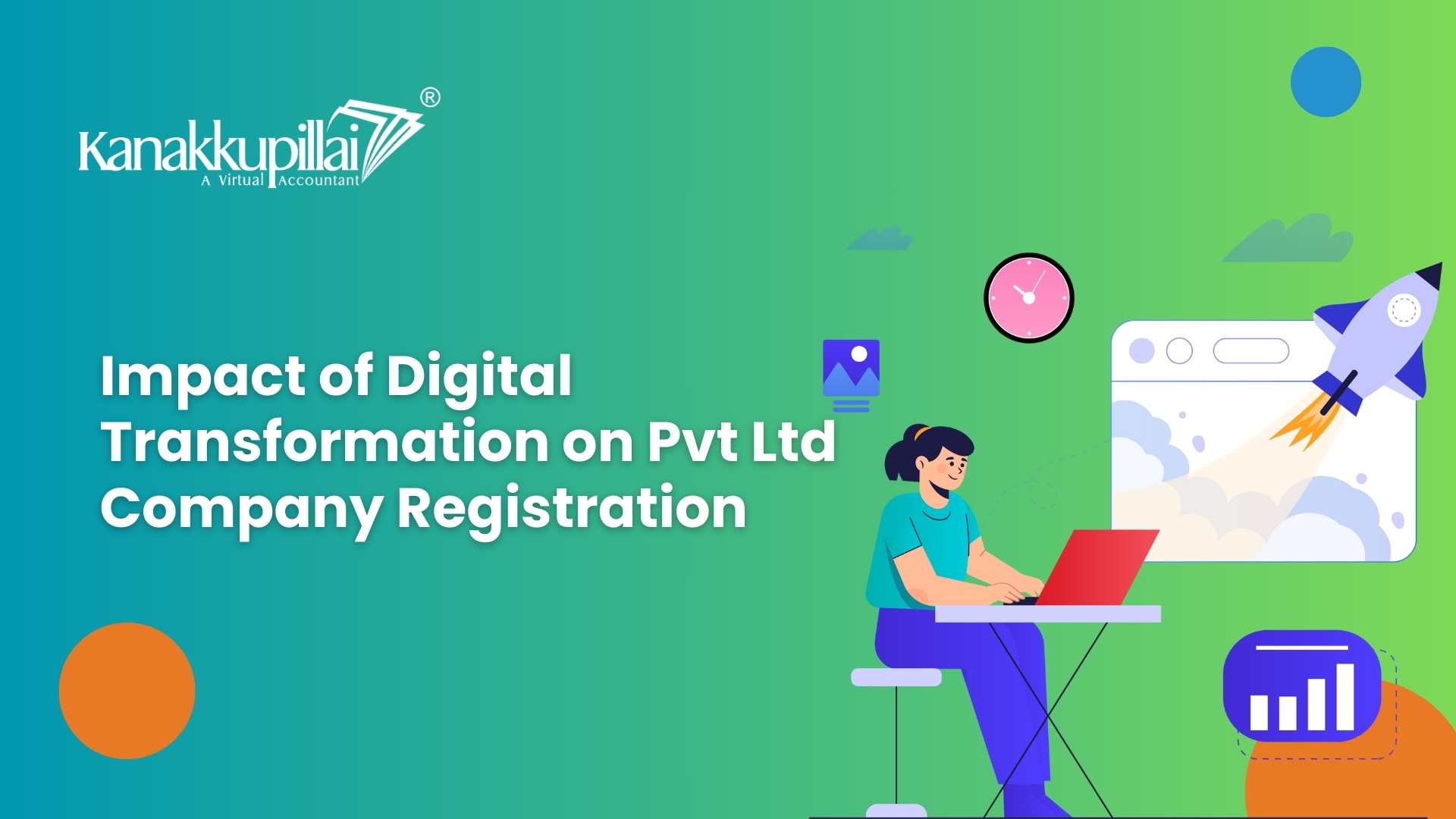![]()
Technology is enhancing people’s lives while also facilitating work in numerous industries. A company can survive in the future by undergoing digital transformation to keep up with changing customer needs. All businesses, no matter how big or small, must have it. It enables businesses to compete more successfully in a rapidly changing market due to technological advancements. Companies can gain operational and productivity advantages with efficient management of digital turnaround.
Many corporate leaders are uncertain of what the term “digital transformation” actually entails. Is it merely a memorable way of saying “moving to the cloud”? What are the benefits of utilizing them? Which digital platforms and tools are most commonly used? What constitutes digital transformation in the development of private limited companies? What elements of the business plan require modification? Does it justify the time and effort?
The goal of this essay is to clarify and provide answers to some of the often-asked questions about digital transformation. The advantages of digital transformation, typical difficulties, and best practices for successful implementation are a few of the queries that will be answered. CIOs play a crucial role in an organisation’s digital transformation since technology is essential to adapting to the market and continuously providing value to customers. Let’s explore!
Key Takeaways
- Technology enhances lives and work, necessitating digital transformation for businesses to survive and meet changing customer needs.
- Digital transformation improves efficiency, productivity, and customer satisfaction.
- Digital onboarding simplifies private limited company registration, enhances data accuracy, and ensures compliance.
- Key components include online registration portals, digital document management, e-signatures, AI automation, and cybersecurity measures.
- Challenges include resistance to change, legacy systems, resource needs, training, data protection, and organizational culture.
- Future trends involve advancements in AI, blockchain, third-party tool integration, gamification, and personalized onboarding experiences.
Traditional Process of Private Limited Company Registration
Manual document filing can be quick, simple, and essential in the early stages of a business. However, manual filing can become time-consuming and ineffective as the business expands and the volume of documents rises. Filing, locating, and saving papers quickly and efficiently in the bustling business environment is critical. In today’s rapidly developing technological environment, more effective approaches exist to maintain organization and increase production. As a result, it is crucial to consider setting up a digital document management system to simplify the procedure and boost productivity.
Digital Transformation in Private Limited Company Registration
The registration process has undergone a smooth and user-friendly digital makeover. It involves real-time client data collection and processing, which is necessary for promptly identifying money-laundering issues. Any lag time offers fraudsters the opportunity to commit their crimes.
This digital transformation process is often referred to as digital onboarding. Collecting personal information and confirming identity is made easier with digital onboarding options. Machine learning and automation, which reduce human participation and increase accuracy, enable digital online onboarding. The client can submit accurate personal information securely and rapidly and have it validated.
Benefits of digital transformation in the pvt ltd company registration process
Many advantages exist for customers and financial institutions when using digital onboarding in registration processes. The following are a few benefits of digital onboarding in the private limited company registration process:
Enhanced efficiency and productiveness: Digital transformation expedites corporate procedures and decision-making, increasing employee efficiency. It is undoubtedly the most effective technique to eliminate outdated procedures or technologies that did not contribute to the business’s expansion for the better.
Improved satisfaction with customers: Technology adoption, particularly in customer experience-related operations, will greatly impact customer retention and the accomplishment of higher satisfaction levels.
Eases the flow of work: By enabling the upload of government-issued IDs, selfies, and other data, digital onboarding streamlines ID verification and provides instant access to required forms. The businesses may add new customers faster and safely.
Improved authentication and verification procedures: To ensure that the customer’s identity is confirmed and that their information is protected, digital onboarding uses cutting-edge authentication and verification procedures. This lowers the possibility of fraud and guarantees the security of consumer information.
Simple compliance: Digital onboarding includes anti-money laundering compliance methods that aid businesses in avoiding infractions. You can stay away from excessive fines and other penalties imposed by authorities.
Ensure accuracy in the data extraction: During company registration, users frequently transmit photos of ID documents that are out of focus, blurry, or finger-covered. Users can snap images of objects other than ID cards or with reflections, shadows, or other visual elements because manual photo options are not restricted.
Overview of the key digital tools and platforms used
Prepare to be amazed by the astonishing power of no-code on your road towards digital transformation! Without coding knowledge, you may create amazing applications, automation, and workflows with the help of no-code tools and platforms. Drag-and-drop capabilities and straightforward visual interfaces are here to replace the complexity of programming.
You can speed up innovation, improve agility, and boost productivity using no-code and other technologies. Integrate existing systems seamlessly, encourage cross-functional cooperation, and give citizen developers influence within your company. Let your imagination run wild, give life to your ideas, and set out on a magnificent digital transformation journey. Embrace no-code’s simplicity, speed, and endless possibilities as you wave goodbye to conventional barriers. Prepare to change your company and build a genuinely enchanted future.
Key Components of Digital Transformation in Private Limited Company Registration
Depending on the type of company or service, the key components of digital onboarding might change but typically involve the following:
Online registration portals and forms: Creating an account entails gathering basic user data such as name and email address. The action is frequently known as the signup section.
Digital document management systems: This entails asking the user for further data, including their address, birthdate, or occupation. Some information could be necessary for regulatory compliance or to offer the user personalized services.
Integration of e-signatures and digital authentication: This entails confirming the user’s identity using various techniques, including knowledge-based authentication, document verification, and user authentication.
Role of artificial intelligence and automation: Businesses may detect suspicious activity faster than ever and stay current with constantly changing regulations by automating the process using cutting-edge technology like artificial intelligence (AI) and machine learning (ML) algorithms.
Cybersecurity considerations: To strengthen security, multi-factor authentication employs various authentication techniques, such as a password and biometric verification. Overall, the essential elements of digital onboarding are created to provide customers with a simple and safe onboarding process while still adhering to legal and regulatory requirements.
Challenges and Considerations in Adopting Digital Transformation
The list of difficulties can go on forever, starting with organisational reluctance to change, legacy systems’ existence, and the ambiguity around customer requirements.
Resource needs and cost consequences: Investment in digital transformation is not inexpensive. Scope creep can gradually delay deadlines and add new work for organizations with a less-than-stellar transformation plan, all of which raise the cost of a project. Additionally, digital transformation costs are rising due to changing client needs or IT mistakes.
Needs for training and skill development: Teams may need additional training to learn how to utilize the new devices and comprehend updated procedures after installing new technology and systems. Even before the technology is available, organizations frequently offer training and resources to their workers to close the skill gap. This will help the team members adjust to the impending changes more easily and quickly adopt the new techniques once the technology is in place.
Concerns about data protection and privacy: Digital onboarding entails security threats such as the possibility of fraud, identity theft, and data breaches. Businesses must place sufficient security measures to safeguard user information and stop unauthorized access.
Organizational culture: One of the largest obstacles to corporate change is the organization’s cultural flaws. The biggest fallacy among business owners is that investing in new tools and technologies will enable a company to transform digitally.
Future Trends in Digital Transformation for Pvt Ltd Company Registration
Digital onboarding will become more important as web applications and Software as a Service (SaaS) offerings continue to rule the market regarding user uptake and retention. Future digital onboarding for web apps and SaaS solutions is predicted to be influenced by the trends and advancements listed below:
Advancements in technology and potential impact: The use of machine learning and artificial intelligence to automate business operations and enhance decision-making is one of the upcoming trends in digital transformation. The widespread use of blockchain technology for safe and open transactions is another trend. Businesses adopting these trends will likely experience long-term productivity, efficiency, and profitability gains.
Integration of Tools from Third Parties: SaaS products will emphasise seamless integration with popular productivity, collaboration, and communication applications. Streamlining the onboarding procedure will make it easier for users to switch to the new platform and decrease friction by integrating their existing tools and accounts.
Gamification: Gamifying the onboarding procedure can increase user engagement and improve the fun of learning new platforms. Businesses may encourage customers to explore and learn their products more effectively by implementing components like prizes, progress monitoring, and interactive lessons.
Personalization: SaaS providers will increasingly use data-driven insights to provide personalized onboarding experiences catered to users’ preferences, abilities, and objectives. This may entail adjusting the onboarding process, providing information that is specific to the situation, and making tailored product suggestions.
Conclusion
The complexity of digital transformation goes beyond simple process automation; it also involves changing business models, customer expectations, and the processes themselves. Digital businesses create value and make money by digitally connecting all relevant systems, people, places, and things. Today, any business may construct a strategy and employ digital technologies to establish a successful position for their company and the industry. The next stage in the growth of global and national economies is the potential that digital transformation unlocks.
Due to the need for firms to keep up with potential regulatory changes, this process might take a while. Hiring human compliance teams may also be particularly difficult for startups with restricted resources. However, organizations can stay secure and compliant while concentrating on their core business by leveraging automated KYC providers and third-party digital onboarding services.
There are numerous client onboarding options on the market right now. Your particular requirements and use scenario will determine which is ideal for you. However, Kanakkupillai is a strong competitor because it completely adapts to your needs. Businesses of all sizes favour it since we also provide a user-friendly interface and smooth connection with other software programs. With its cutting-edge features and adaptability, we can help you streamline your onboarding procedure and raise client satisfaction levels. Kanakkupillai also has all the security components needed for more thorough identification verification. This is ideal for sectors that need a comprehensive identity verification solution to adhere to identity theft and money laundering rules.





